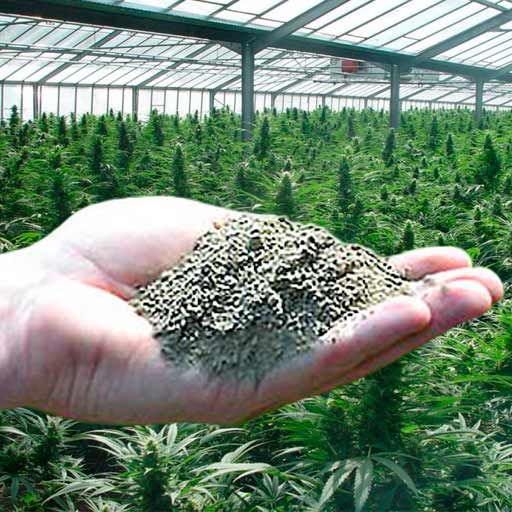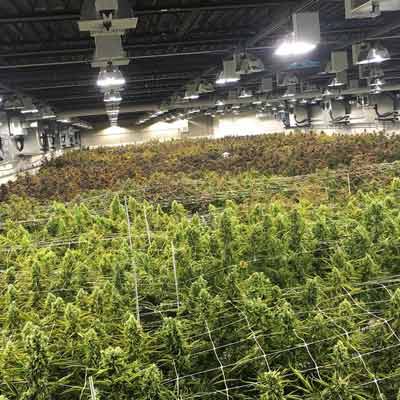Skunk is one of the most popular strains worldwide. Nevertheless, the use of this name has been diversified, and today there are many places where skunk is a generic way of referring powerful marijuana strains, with high THC levels. Beyond there is a story, back in the day when first genetic crosses started, and first growers behind all this scene. Firstly we go back 45 years in time, until early 70s decade, when landraces were grown under Californian sun, and Holland legalized the sale of cannabis for the first time, what originated the first comercial cannabis strain called Skunk #1.
Precedents of Skunk strains
Following the oldest guys word, there was a time before 70s, in wich the only existing strains were pure strains of cannabis (i.e. Acapulco Gold, Panama Red, Maple Leaf indica), that were only grown outdoors, starting from seed, with a long flowering time. During the 60s, with cannabis increasing popularity, cannabis growing started to sproud in the occidental world. Nevertheless, growing techniques, and grower's knowledge, were limited, and domestic marijuana yields were low, as well as the quality of the crops. Material bought for consumption was loaded with seeds, and those seeds were used for following cycles, so the problem was polinized plants produced seeds, but brought lower yields of buds, while non-polinized plants took longer to mature, and was difficult to grow them in certain climates.
Was back in the 70s decade when changes started to appear. In 1975 a book called Sinsemilla, written by Jim Richardson, revolutionized the cannabis growing scene in the United States, an started to appear a large number of experimental growers. In this book, based in techniques developed in Indica, spread the art and the basic idea of removing male plants from gardens, leaving only the females. This way, females were kept without fertilize, and instead of producing seeds, they focussed all its energy in resin production. At the end of their cycle, the amount and quality of buds improved consistently, and also the concentration of cannabinoid, terpenes and more active ingredients, in addition to enhanced taste and flavours.

The Sacred Seed
Says the legend that one of those experimental growers was David Watson, later on nicknamed as Sam the Skunkman. In that moment, The Skunkman joined a group of growers (it's not clear wich was exactly its role in that collective) that used to be called The Sacred Seed. This group, in wich many of the greatest names of Californian scenario were present (Mel Frank, Ed Rosenthal, Mendocino Joe, Jingles...), used to grow outdoors, looking, identifying, and selecting genetics from thousands of plants to later on stabilize them.

Seems that Skunk prototype has its origin here. This strain was developed with the purpose of keeping the strength of a plant, at the same time that leaf to bud ratio was reduced. It is not clear who was the creator of the Skunk (some people say was Jingles, some Rosenthal, and even Sam...) but what we do know is that the first strain was bred within a Colombian Gold female (sativa) and an Afghani male (indica), what became in a strain that grouped the psycoactive effects from a sativa, with the quick flowering time, and dense buds, of an indica. The idea was getting a plant able to produce large yields, with not many leaves, a quick flowering period, and a strong aroma, with powerful psicoactive effects.
And they got it, Sacred Seeds satibilized this new strain and called it Skunk, due to its similarities in flavour with the stinky smell of skunks. The Skunk was grown and improved in the hills of San Francisco until early 80s, time used to include Acapulco Gold genes to decrease the amount of leaves, and its flowerign time. Even though, with the seed imports botritis also arrived, an illness caused by botrytis cinerea funghi, that ruins plants quickly (mostly indica plants); so Sacred Seeds had to look for a solution for the Skunk to resist it.
Sam the Skunkman
During them80s, policies against drugs by Ronald Reagan, closed a circle on marijuana and its growth. In 1982 Sacred Seeds was seixed and dissolved. After some other issues with the DEA, David Watson ran away to Holland, this time traveling under the name of Sam Selenzy, bringing all the data from Sacred Seeds investigations, and also 250.000 cannabis seeds with him (in-between was the prototype called skunk).
Once at this point water starts to turn grey. Still today there are many people who aske themselves who was Sam the Skunkman, how he got all that information, and how he crossed a custom with those many cannabis seeds. Some old members of The Sacred seed say Watson was a low-member of the group, so he was not involved, or almost not, in Skunk dveelopement neither other strains. Others asure that Watson was an undercovered DEA agent, who worked for the US goverment. For other Sam the Skunkman is the father of european cannabis hybrids.

Dutch input
Leaving a side what is true and what's not, the thing is Sam moved and set his base in Amsterdam, where he knew, and meet with whoever participated in cannabis scenario. In Holland the parliament had approved, back in 1975, a tolerance politics for soft drugs, that allowed the consumption, and buy/sale of marijuana in what was called youth centers. When Sam the Skunkman arrived in 82, Amsterdam was living the rise of choffee shops, and was not difficult to start working legally with cannabis plants. In 1984 founded Cultivator's Choice.
While in the USA grower had been experiencing mostly with sativa strains, in Holland the mostly worked with indica, besides, also started to experiment with first indoor gardens. All that became a key point for Skunk developement.
75% sativa / 25% indica, is the ratio they got for Skunk #1 as we know it today, an Afghani Indica, Acapulco Gold, Mexican Sativa and Columbian Gold Sativa, top grade quality, easy to grow, that turned in the first comercial strain, as well as the first Cannabis Cup winner back in 1988.

Last 30 years
After being introduced to cannabis scenario, the term "skunk" turned into a sinonim of some strain that kept appearing at the same time than the original, wich turned, at the same time, into classical strains. Along the last decades, the skunk influence has been large, so its genetics has been used for crossings uncountable times to breed new hybrids, bringing out a huge amount of Skunk crossings - almost one for each like-, and a neverending list that still grows.
Today, Skunk strain is almost in every proud Seedbank. The original Skunk is still an incredible popular classic, and one of the most stable, homogenous plant you can trust.
Skunk #1
Genetics: Afghani - Acapulco Gold - Columbian Gold.
Flavour: Skunk, with earthy undertones.
Effect: Relaxing, pleasant feeling, euphoria, enhances concentration an creativity.
Skunk strain originhas some controversy, because there are not few who claimed its breeding origin, nor few the versions made from its history. Skunk is a legend. What was, and what not... Who made what... Sometimes what's real is not the most important part. Isn't it the main characteristic of legends? Who cares about who killed the dragon, what's important is the rose that sprouted from its blood... Wait... Wasn't it hemp what sprouted?
Sources:
Cannabis: Evolution and Ethnobotany
If you thought this article was interesting maybe the you are also interested in the following ones:






1 Comment